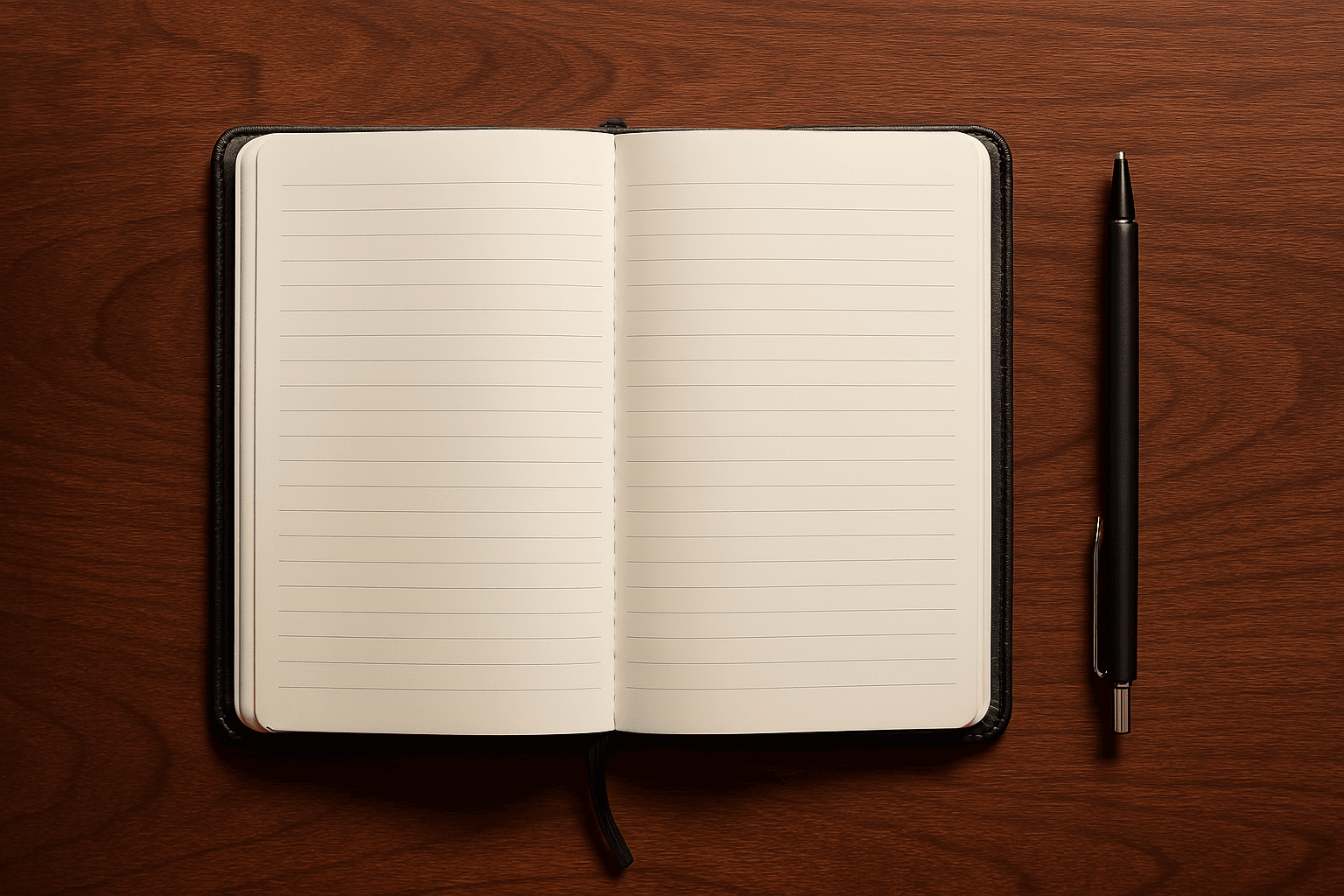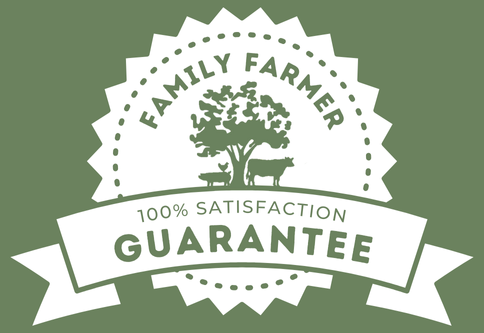The Wild Cow Chase
posted on
August 15, 2021
Let me introduce you to Blacky! Here's the best way to describe her. Have you ever had a teenager, that always seemed to rebel against you? Never did what they were supposed to and seems to just create trouble/havoc? That is how I feel about Blacky.

The story began July 17th. It was a nice Saturday evening around 7pm, I was just finishing up with chores outside and getting ready to head inside for what I thought would be calm night with family. Then the call came in from our neighbor. "We got some cattle in our corn field. Are these yours?" I certainly wanted to think they weren't ours, but headed out to check. Yep, they were our cattle. First, I went back to the pasture that they belonged at. We keep a small group of 7 heifers over at our neighbors 6 acre pasture. Sure enough, gate was wide open! Evidently, looks like they busted one of the links on the chain that holds the gate closed. It's always something simple. Sigh.
I proceeded to call Hannah and my parents for help to round up the cattle. At first everything went very smooth, we moved them all to our neighbors horse pasture adjacent to the corn field. However, Blacky refused. (Let me give you a quick background about Blacky, even before this event she would refuse me to come within 30 feet of her, before she would take off running away. When we purchased the group of cattle, we never noticed that she was spooky, but as soon we put them on the wide open range of pasture, a different story. She was already hard to handle when we would move them from paddock to paddock, quite a crazy cow. We even had to get my neighbor and his wife, just to help us move her to the next paddock one day.) Well we did what I thought was the right thing to do, move the rest of the herd and leave her. Cattle don't like being alone, they will usually follow the rest of the herd. Well she never did, she stayed where we found them while we rounded everyone else up. When we went back to move her, she became even more spooky with us and proceeded to bolt past Hannah, almost running her over, and jump over a horse fence into another neighbors pasture. I thought great. She's in the fenced pasture now! However, that didn't work either, as soon as we entered to move her in that pasture, she jumped the fence again to the other side and ran straight for the woods. By this time it was 8:45 and about dark. I walked to the woods where she entered, no way I was going to find her at this point. New plan, was leave our cattle inside our neighbor's pasture over night and maybe she will come back to want to be with the rest of the herd. Makes sense as they are herd animals.
Sunday morning after chores, I headed out to check if she came back. No signs of her. We proceeded the rest the morning traveling though every deer trail in the area looking for signs of her. Absolutely nothing. Except saw lots of deer and I am sure every deer trail camera caught us haha. I continued the rest of the day driving around, asking the neighborhood to keep an eye out for her, but nobody had seen anything. Called the sheriff department in both Walworth and McHenry counties, and local animal control, if anyone had called in about spotting a cow. I pretty much lost hope for the day and figured I'm sure she will eventually head back home or someone will call. Kind of like a run away teenager, right? Haha.
It wasn't until Thursday, we got a call from a neighbor 2 miles northwest from our farm, they spotted a cow behind their horse pasture eating in a soybean field. It was about 8pm at this point. I called my parents, 2 of my neighbors. So we had a group of 7 people thinking we could round her up into their horse pasture. Nope, as soon as I saw her and she saw us (about 100 yards from us she was), she bolted into the woods. Again it was almost dark at this point and I called the chase off and realized we would never catch her tonight.
The neighbor never saw her again the following days and It wasn't until that Saturday, after I went on a long hiking trip through the woods to track her trail, before, I finally found her again munching on some soybeans in a different field. At this point, I just wanted to know where she was and didn't try to chase her or anything. We decided lets call around for someone with a tranquillizer gun, as this may be the only way to get her. She was too spooky for us to round up. I talked to the local animal control, police department, and the veterinarian. Which finally after a rabbit trail, someone gave me a number to someone that could help. Sure enough, this someone was a local cowboy who does professional rodeo shows. He recommended not tranquilizing because of how messy it can be, but assured me they could rope her with the help of his 2 dogs.
Monday morning, the cowboys, dogs, and us went out on the quest to catch the crazy cow! At least that was the plan. After 1.5 hours of searching for her. She finally was spotted, but it all went down hill from there. The dogs and cowboys couldn't catch her, she bolted past them and jumped another nearby fence and onto Gasch road. The cowboys of course chased after her, but after a half of mile chasing down the road, she ran past the Stateline into Wisconsin and into another neck of woods where they lost her. Failed. I then called the Walworth county sheriff department if anyone reported a cow on the run. Yep, She was spotted another 2 miles more northwest from where we were, heading toward the major hwy 14. We drove up there, but of course no signs of her at this point. So we talked and shared with the area neighborhood letting people know there was a cow on the loose. (I sure got to know the neighborhood the last few weeks, Haha)

Finally, someone called me Thursday evening about 8pm. They spotted her hanging out by the road. We headed out there to find her. We now had a starting point to search. The next day, was spent walking the area to find out where she was living. Yep, there she was and calling this area home with plenty of water, shade and food to munch on, but the area was surrounded by corn fields, not ideal for chasing a cow.

When I called the cowboy again, he seemed quite down about last time and didn't seem to thrilled. Had some nasty words that he called her. Haha. I was worried, that he gave up. There was an old fenced in barnyard nearby the area. So we decided lets haul over 2 of our cows into that barnyard and see if that would draw her up to want to be by them. So we proceeded to do that. At this point we are 14 days into this chase. That whole week, I would go over there and moo like a cow, put out nice sweet smelling hay to try to draw her up to them. But no luck. I even got a few more calls from folks telling me they saw her. She would cross the road many nights to go eat out in the bean field, which was giving me anxiety, worried someone would hit her with their car. I really wanted to give up chasing this cow and leave her at this point, but then other farmer friends would tell me horror stories of loose cattle getting hit by cars and how that will be much worse and a liability for me. I couldn't afford taking the risk of having to pay for a totaled car or even worse, another human beings safety!

Once again, I called the cowboy again in hopes he had some ideas. He agreed to try again. This time though, he brought 4 dogs to help chase her down.
Early Friday morning about 5:30 am began another wild chase of the cow. We knew she was living along this creek that ran in between 2 corn fields. I went in to flush her out from the west side of the creek knowing she was last spotted on that end. The cowboys started on the east side going west into the wind with their dogs. Not long after, I starting to walk through the thick grass, some of it as tall as me, I heard this rustle. There she was and running towards me on the opposite side of the creek that I was. I ran as fast as I could to cross the creek and cut her off, but after falling into the creek, It didn't work. She got by me and was heading west. I called the cowboys and said I think we lost her. Further to the west the creek ran into a wooded area and I was quite disappointed again. The cowboys then finally arrived where I was. We proceeded to look for the cow tracks and where she went. However this time, she didn't continue west, but ended up turning south into the corn field. We quickly got the dogs on her trail in the corn field. Then all of a sudden, I hear from one of the cowboys. "COW!" There she was running through the corn field south. I then bolted down the driveway running towards the road to try and cut her off. By the time I got to the road, she was already there and about to cross the road into the bean field (I was holding my breath as she was so close to getting hit by a car when she ran across the road). After chasing her close to half a mile southwest in the bean field, the dogs and cowboys finally caught up to her. I couldn't as I was on foot and dying gasping for air at this point. So I missed the big catch. By the time I got there, they had her roped up and finally controlled! :)
Wish I got some pictures of this, but failed to remember.
I am pretty sure the neighborhood that lived there got a kick out of waking up to their morning coffee, witnessing a mooing cow on the run with barking dogs, cowboys, and finally me running after them through their backyard. Haha.
We proceeded to pull her on the cattle trailer after roped up and then back to the home farm after 20 days of being on the loose (also cost me a half a day of putting a new tire on the truck as we accidently hit an old concrete curb while loading the cow on the trailer, sigh). Wow! Quite the adventure Blacky the cow had caused. I guess it made for a good story, but sure did cost money, time, and worse of all, agony! I got to say thanks to Hannah for putting up with the late nights and missed family meals, while searching for Blacky.
Thanks for the read and mean while, I am off replacing old gate chains and double checking my fences!
Joe



